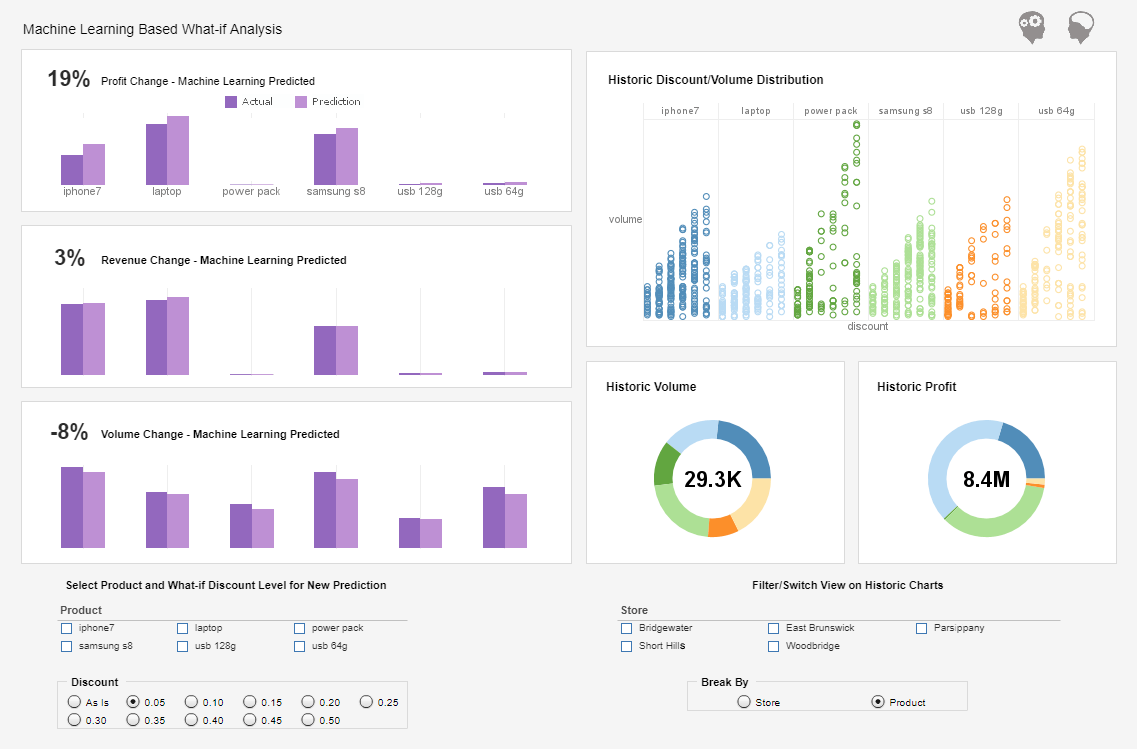InetSoft Webinar: Number Six – Learn to Rely on Data, Not Strategy Maps
This is the continuation of the transcript on "Top Ten Business Intelligence Mistakes" hosted by InetSoft. The speaker is Christopher Wren, Principal Consultant at TFI Consulting.
Number six. I know I am going to offend some of you on this one. Strategy maps, I think for the most part, are a waste of time. What they are good at is generating consultant billable hours. So if you are a consultant, you love strategy maps because that means you are going to have a lot of meetings and draw in a lot of circles and arrows on flip charts and ultimately sending out a lot of bills to your customers.
The problem with strategy maps is that not everybody knows what it is. Will you start from the end and try to achieve a specific sales growth or will you want to achieve a certain target and work back from it and slot the measures into your categories or whatever sounds logical?
The problem with the best majority that I’ve seen is that there is no data supporting any of those arrows that are drawing on the boxes. They say, well I think in order to get this increased loyalty from our customers we need to reduce the defects in this. To get that to happen, we need to improve employee morale.
In order to raise employee morale, we need to do more training so everybody sees it. The best way to do that is to create a team. I’ve been in the business for 20 years and I’ll say it sounds good to me but the thing is nobody checks these assumptions and all these arrows are based on assumptions, not on data.
Lower Level Gauges
People are going to spend money to make these lower level gauges get greener and improved. When the results aren’t what you want, everybody says how could that happen, we have a strategy map.
What you have is a bunch of people’s assumptions drawn on a flip chart. So you need to test every one of these links that are supposedly there to improve customer satisfaction by 10%, but customer satisfaction isn’t going to drive any more loyalty that customers might respond by saying what you are doing is just fine the way it is.
I don’t need to improve service. I’d rather lower price or do something else. So you need to test all these assumptions. If that’s the case and your strategy maps have data behind them in all forms, I think that’s a wonderful thing. Unfortunately the vast majority do not.
So every process or leading indicator needs to be supported with data that says if I manipulate this variable, if I get your diet to change, that will then impact your cholesterol, your likelihood to have a heart attack, and impact your overall health, your longevity and lots of data to support that’s not based on assumptions.
It’s based on a lot of data so that’s the kind of thing that I am looking for in these strategy maps that I don’t see. It’s kind of like the emperor’s clothes story. Since that was done by a consultant, and it has got circles and arrows on it, and it look scientific, and we had a bunch of smart people in there who have experience, and they developed it, no one is going to question it.
We all ought to be questioning it because it’s almost worst than not having any leading indicators at all. Because what it does is it creates a scorecard with all these process measures on it and everybody goes to a meeting and says we are doing well. We have this many people in six sigma training and we did this and we did that which resulted in 18 customers this month, which means we’re doing good right? Well, the end of the year comes around and you don’t hit your target number and then what? What happened there?
Use Data to Validate Strategy Maps
It’s so much better to be alarmed earlier on don’t you think? It’s much better to have your cholesterol shoot up and say man I have to do something about this, I have a problem here. So beware of these strategy maps when somebody sells them to you. Say I’ll be glad to use the strategy maps but I want you to check to support these things with data. What number are we on now?
When you rely solely on strategy maps without validating the connections with real data, you risk making decisions based on intuition rather than evidence. This can lead to initiatives that consume resources but fail to deliver meaningful results. Instead, organizations should focus on collecting and analyzing relevant metrics to ensure that every action taken is grounded in factual insights.
Data-driven decision making empowers teams to identify which processes truly impact outcomes and which are simply assumed to be effective. By continuously monitoring key indicators and testing hypotheses, businesses can adapt quickly to changing conditions and avoid costly mistakes. This approach fosters a culture of accountability and continuous improvement.
Ultimately, the goal is to move beyond assumptions and establish a framework where every strategic move is supported by measurable evidence. This not only increases the likelihood of achieving desired results but also builds trust among stakeholders. When everyone understands the rationale behind decisions, backed by data, it becomes easier to align efforts and drive sustainable growth.


